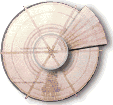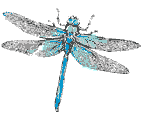| Historical text. | 3 | 2 | 1 |  |
 |
 |
External... |
| Shelter. | |||||||
| Introduction. | Site Index... | ||||||
| < Stantonbury Play. | Last ^ | ||||||
©Text by Monica Mears, 1992.
ROBERT HOOKE (1635-1703) Architect of Willen church, has been acclaimed as "one of the most inventive geniuses the world has ever seen". After the Civil War, and the Restoration of Charles 11 in 1660, he became Curator of Experiments to the newly founded Royal Society, a post which he held until his death. He was the leading scientific figure of the period, with a mastery over a vast range of scientific fields. After the Fire of London in 1666, he was appointed City Surveyor, to oversee the rebuilding of London. He and his friend Christopher Wren turned their hands to architecture, Hooke designing many beautiful and prominent buildings. His Monument to the Fire of London is still a landmark, but Willen Church is his only other known building that remains virtually complete. CHEMISTRY& COMBUSTION Hooke proved by experiment that in combustion something (now known as oxygen) is taken from the air and that in the absence of this substance combustion quickly ceases, however much heat is applied. His work was forgotten and it was not until the 19th century that this same discovery was made again. AIR PUMP Ancestor of the steam engine and internal combustion engine It was hooke who designed and made the air pump (for creating a vacuum and compressing air) Which Robert boyle needed in his experiments leading to the formulation of boyle's law MOREPHYSICS... OPTICS & THE THEORY OF LIGHT Hooke was the first to observe the pattern ol colours in a thin film of air between glass plates- EXTRACT FROMROBERT HOOKE'S DIARY Thursday, January 22nd, 1674 -At Haywards ls.6d Spanish coffee house. Fleet Ditch with Committee. At Scots cald. Fell into dirt at Lad Lane. Spoke to Sir W Arnerfor Mr Ogylby. Dfined] I-Ifomel. Nell here quick. Read part of Lecture about Hevelius.Shewd Experiment about Sight. ConvincedalL Lord Brounkerorderedmakingaquadrantaftermy way. TotryExperimentofLoadstonenextDay. GoddardGrumble4L AtGarawayswith Cap. George Jacobsom Diodati, Hambdem Hill. Much philosophicall discourse of Elephants who never ....... of Gold in graine. (Ifound in old Nichols garden a Mulberry tree that had formerly been splitt tivetted together by an iron bolt 1 inch big. The tree thrived much and ever since bore vast quantitys of Mulberrys and never before any. Let more tryalls hereof be made.) Gave Nell 1sh. for Grace's pattern. BOYHOOD. After apprenticing himself briefly to an artist, Hooke enrolled at Westminster School where he mastered Euclid's six books of geometry in a week and invented"thirty several ways of flying." WILLEN CHURCH. Hooke visited Willen once. He came up the dirt roads from London changing Horses at Barnet and Dunstable. Otherwise he left his trusted Craftsmen Horn & Bates, to oversee the work. ARCHITECT Amongst many other buildings designed by Hooke, the Royal College of Physicians and the famous Bedlam Hospital ranked among the new beauties of restoration London. ST PAUL'S Wren employed Hooke as his partner in supervising the construction of St Paul's and the great London Churches. They met to share all their ideas and plans, whether on Architecture or science. Wren altered his design for St Pauls after Hooke showed him his principles concerning the strongest shape for an arch. "AN ACTIVE RESTLESS INDEFATIGABLE GENIUS." Restoration London was a convivial place. People were constantly calling on one another and stating to dinner, or meeting in taverns and coffee houses to hear the news and do business. EXTRACT FROM HOOKE'S DIARY Saturday, May 22nd 1674Slept til 7. At garaways with lem, oliver, godfry, and new carpenter, at the mercers. To Thomkin* in Water Lane. Much discourse with him about watches. * Thomas Tompion, "The father of English Watch making" SURVEYOR FOR THE CITY OF LONDON As City Surveyor, Hooke had to view hundreds of sites, set out the foundations for each building and for street lines and widening. He had to assist, advise and enforce building regulations. He worked on Canals and conduits, bridges, quays and sewers, reporting regularly to the committee of City Lands. "THE CARE, BUSINESS AND CONCERN OF LIFE" In the late 17th century, science was regarded as a central concern of life. There was an urgent need for improved ships, faster land vehicles and more accurate maps and navigational aids, to further the great commercial expansion of the age. HOROLOGY He greatly improved the accuracy of clocks and watches through his work on springs and his invention of the anchor escapment. HOOKE'S LAW UT TENSO SIC VIS NAVIGATION How can a ship's captain determining his longitude at sea? EXTRACT FROM ROBERT HOOKE'S DIARY Thursday, February 11th, 1675Wrot out direction for carpenter. Sent them to Monox treasurer and Bell. To Mr Mountacue found him in Westminster Hall, Lime Court. Saw him sweat and c. Well pleasd. With Tompion at Carvers, at Mans 7d. With Moxon and Dr Mayow. Saw Sir Christopher Wren. Brought in Fleet Street for 4sh., mellons. 5 figures Call garden of honey and Greens Weale and wonders. At Moxons discoursed about cutting boarders letters and for Roman press in copper. Shewd Tompion in Martins shop how to stay a falling clock weight by a scafold pole. Received bill for books from Mr Martins as above. Dind with Waters, Story, Fitch, Hammond and c. at the Bear. Dr Croon at Royal Society read of the muscles of birds for flying. I discoursd much of it. Declared that I had a way of making an artificial muscule and to command the strength of 20 men. Told my way of flying by vanes tryd at Wadham. Told Mr Wrens way by kites, the unsuccesfulness of powder for this effect, and what the tryalls and contrivences I had made. Dr Pell told me of meeting at Collonel Titus's about commission of Logitude. With Sir Andrew King 2 houres. Received from Waters two load of Bellats, paid him 2s.6d. for carridge. Ill at stomack, drank brandy. Thom. Urry of Farm here. 1 bottle of white wine. John Man his press. MICROSCOPY Hooke's meticulous drawings showed to the public for the first time the intricate world visible through the newly invented microscope- the eye of a fly, the "pretty bodies" on a speck of mould, a flea. Samuel Pepys described Hooke'sMicrographica(1665)as"The most ingenious book that ever I read in my life". FATHER OF CELL BIOLOGY Looking at a section of cork through a microscope, Hooke was the first to observe that plants have a cellular structure. He gave the plant "Cell" its name. MEDICINE AND PHYSIOLOGY Hooke did some of the earliest experiments in skin grafting, blood transfusion and artificial resperation. THE ROYAL SOCIETY Hooke was the Society's secretary for some years and corresponded with scientists all over Europe, in at least four languages. GEOLOGY He was the first to recognise that fossils are petrified plants and animals and that the appearance of the Earth's surface is the result of earthquakes, flowing water, and the movement of the Earth's crust.EXTRACT FROM ROBERT HOOKE'S DIARY Monday, April 3rd, 1676 To Tower Dock, Smith, Lever, here. Directions for quadrant. Bird here, discourse about fly, pump, trublesum maesse. At Alsops, Mr Martins, Sir W. Pettys. Discourse of chariot and Tangier. Shewed him further to hang it on springs. To Boyles. Slayer his room and pump, Pappin's engine. To Mans chocolat 6d. At Ellis 8d, never more. To Mr Montacue with Mr Fitch agreed the whole building for 23 hundred pounds. Missed Oliver and Faircloth at Garaways. Described turret at Bedlam. With Sir Th. Player and Ailward. Garaways, Fitch, Hayward, Crisp and c. Drank port-portand eat pease porridg. Slept well. St Albans Cornerstone layd. THE FIRST METEOROLOGIST Hooke invented the wheel barometer and found that changes in air pressure were followed by changes in the weather. UNIVERSAL JOINT Invented by Hooke in 1676, the universal joint is a key component of the modern car. Short Bibliography |
